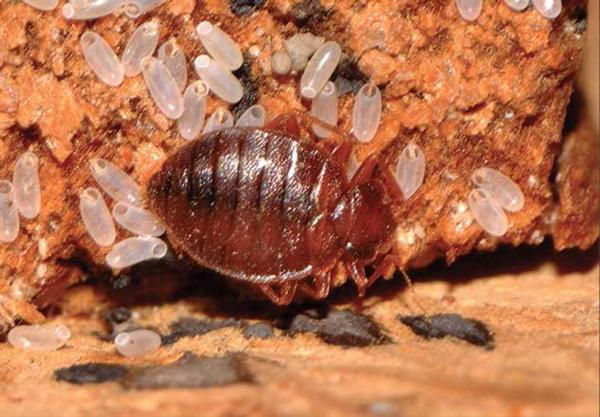Bed Bugs In Auckland
Friday 7 December 2018, 10:19AM
By Thrive Tech
1234 views
Bed bugs are widespread throughout Auckland and New Zealand in hotels, motels, backpackers, apartments and even homes. With increasing resilience to traditional chemical treatments they are very challenging to eradicate. In addition, as these insects tend to hide in dry, dark places it can be difficult to eliminate all of the bugs and consulting a professional is often encouraged.
WHAT ARE BED BUGS
There are two common species of this small insect in New Zealand, the Cimex hemipterus, the tropical bed bug, and Cimex lectularius, the common bed bug. These critters are generally between 4-7mm long, and are wingless, flattish and when adult are a reddish-brown colour. Bed bugs get their nourishment from blood, most commonly from humans, and other mammals including dogs as well as birds when necessary.
Both male and female bed bugs will typically live for up to one year, in which time a female can lay between 200-400 eggs in clusters of 10-15 in cracks and crevices. From egg to adult, these insects have five larval, or nymph, stages.
After 7-10 days of being hatched, the instar nymph will emerge from the egg, looking similar in size and shape to adult bugs but be translucent and cream in colour. The bug will gradually become darker and grow larger in size, moulting at each key stage. These insects can survive without a meal for several months but won’t moult without one. In ideal conditions, a bug will go from egg to adult, through all five stages, in one month.
SIGNS OF BED BUGS
There are some key signs to indicate you may have a bed bug infestation. When this occurs it’s important to deal with the problem quickly and effectively, as they can breed and spread quickly.
First of all it’s important to know bed bugs are often carried into a home on objects such as second-hand furniture or clothing, and can be found in seams, creases and folds of mattresses, cracks in a bed frame, or in dark, hidden areas of a chair, couch or curtains. As such it’s a good habit to get into to check any items you may want to buy or those already in your space.
Once they do get into your home, motel or backpackers, there are two key signs to look out for: bites and spotting.
Bites: While bed bugs are not known to carry infectious diseases, in most cases they will bite and cause irritated and inflamed skin. Many people will have a minimal reaction to the bites and will predominantly find they get marks similar to that of a mosquito or sandfly, however some people can be allergic to the insect’s saliva and have larger bites. It’s good to note that these bugs tend to target a person’s hands, shoulders, legs and neck, while fleas tend to bite around the ankles. You may also notice blood spots on your sheets, which could be from where you were bitten in the night, the bugs releasing excess fluid, or from being squashed while you sleep.
Spotting: Another key sign of bed bugs is small black dots grouped in corners of furniture, under the wooden slats of a bed, or on the edge of a mattress. This is the faecal traces and digested blood of the insect. Infestations can be recognised by a heavy amount of spotting, which, in more extreme cases, can also be joined with eggs and moulted skins of the bugs. In this case it is crucial to treat the area as soon as possible.
HOW TO GET RID OF BED BUGS
Just a few bed bugs can quickly turn into a full blown infestation if not treated effectively. They are not the sort of pest you want to try treat yourself as typically by the time you find evidence of them the spread is severe. Professional treatment may include the following depending on the severity of the infestation:
Cryonite System: Kills bed bugs using carbon dioxide ‘snow’ (-78°C). There are no insecticides and there is no residue build-up, so no risk of toxic or allergic reactions. This makes it a perfect and very effective solution for the control of bed bugs. The carbon dioxide used is a by-product of an industrial process, so it adds no extra carbon dioxide to the atmosphere.
Cimex Eradicator: Kills bedbugs using a superheated dry steam (180°C) and removes the smell associated with bedbugs. This cost-effective treatment causes thermal shock and can eliminate the adult insects, the larval stages and the eggs. Because the overheated dry steam does not release toxic substances it can be emitted in the presence of people.
Bed locks: Following treatment, where practical we will recommend the use of mattress and/or base locks to prevent infestation in your bed.
Not sure who your local pest contoller is? Contact A-Jet Services, with over 30 years experience they are one of Auckland’s leading bed bug treatment specialists. They were also the first to carry out a truly effective integrated pest control service using chemical free treatments.
Article posted by Thrive Tech
